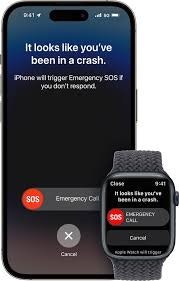Apple's Crash Detection

In recent years, Apple has introduced innovative safety features to its devices, including Crash Detection on the iPhone 14 and newer models. This feature uses advanced sensors to detect severe car crashes and will automatically contact emergency services if the user is unresponsive. While the technology has been praised for its potential to save lives, it has also led to an unintended consequence: a surge in false emergency calls to fire departments and other first responders.
The Crash Detection system relies on data from sensors in the phone or watch to identify sudden impacts, changes in speed, and other indicators of a collision. However, the feature isn’t perfect. In some cases, the system has misinterpreted high-impact activities—such as roller coaster rides, intense sports, or even dropping the phone—as car crashes. When this happens, the device automatically dials 911 and plays a pre-recorded message alerting emergency services to a potential crash. This has resulted in a significant increase in false alarms.
Fire departments and emergency call centers across the country, including the Livermore Fire District, have reported a noticeable uptick in these automated calls. These false alarms strain emergency resources, diverting personnel and equipment from genuine emergencies. In many cases, responders have had to physically locate the source of the call, only to find a perfectly unharmed individual unaware that their device had triggered an alert.
Apple has acknowledged the issue and continues to refine the Crash Detection algorithm to reduce false activations. In the meantime, emergency services are adapting to the challenge. Users are encouraged to familiarize themselves with their device’s settings and consider disabling the feature in situations where it might be triggered unnecessarily, such as during extreme sports or amusement park visits. If your phone does alert you that it has detected an accident, which is determined to be a false alarm, it’s very important to cancel the SOS to prevent first responders from going on an extended search for a non-existent emergency. If our 911 dispatchers receive an iPhone crash alert, they will try and call the number to verify that an accident has indeed occurred. It’s very important to answer the phone, if possible, and communicate with 911 dispatch if there is a true emergency or a false alarm.
As the system evolves, collaboration between tech companies, first responders, and users will be key to ensuring that this life-saving tool operates as effectively as possible without overburdening critical emergency resources.
